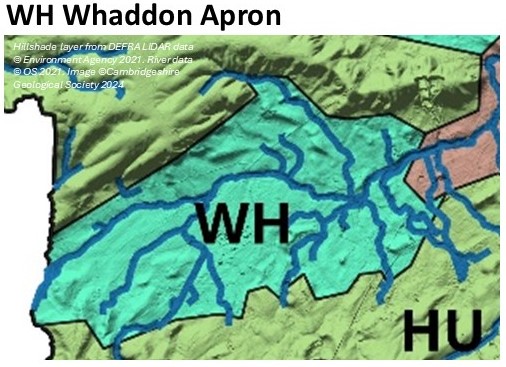

The Whaddon Apron
The Whaddon Apron is a broad southwest-northeast aligned depression drained by the upper reaches of the River Rhee and its tributaries. It is located between the Western Plateau and the Heydon Chalk Uplands. The elevation is typically in the range 20 to 40m OD and the clay-rich soils are often poorly drained. There are also fragments of River Terrace Deposits and an Alluvial floodplain. It is underlain by Gault Clay and West Melbury Marly Chalk, and the thin Cambridge Greensand at their junction was worked for coprolites by open-cast mining in the late 19th Century.
There is one geological SSSI, Barrington (gravel) Pit and no LGS.
Barrington Pit is a site of national importance for its vertebrate fauna. It is one of the richest and most important mammal localities in the British Isles – most finds having been made around the turn of the century. The deposits in which mammal fauna have been found
date from the Pleistocene Period of the Quaternary. Fifteen species are represented including hippopotamus, extinct rhino, extinct straight-tusked elephant, various deer, aurochs, bison, lion and spotted hyaena. Pollen analyses from sediment adhering to museum specimens indicates an Ipswichian Interglacial age.




